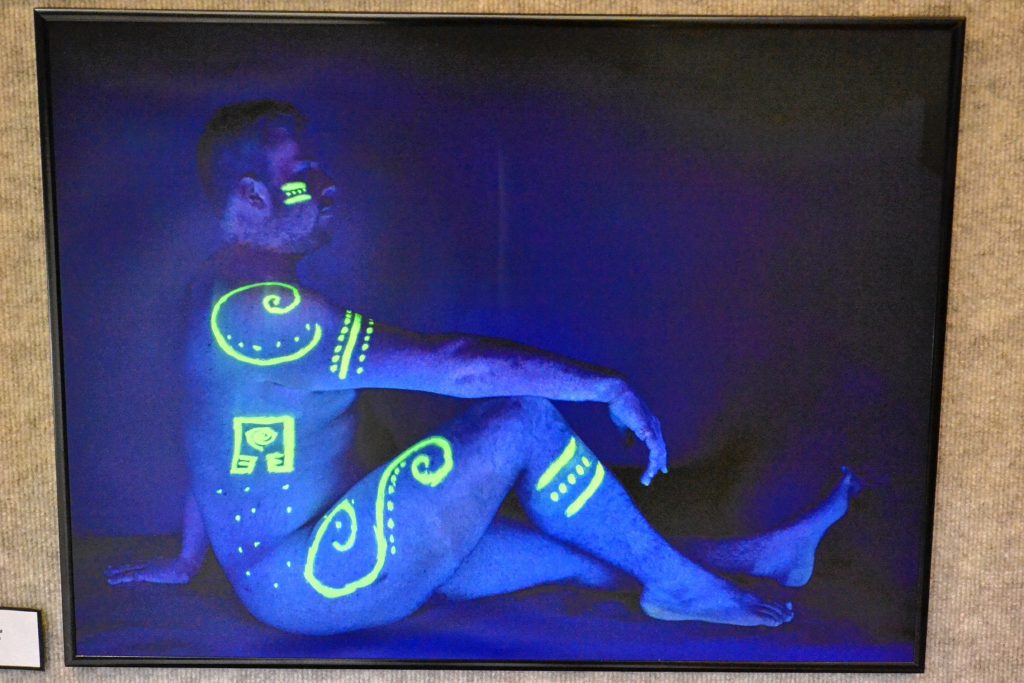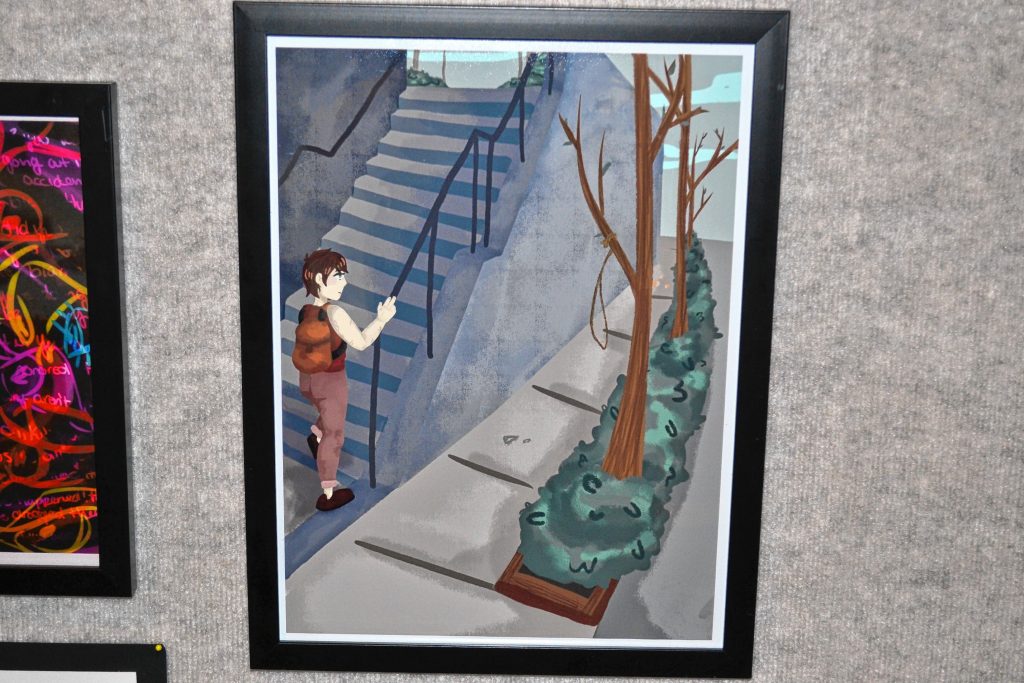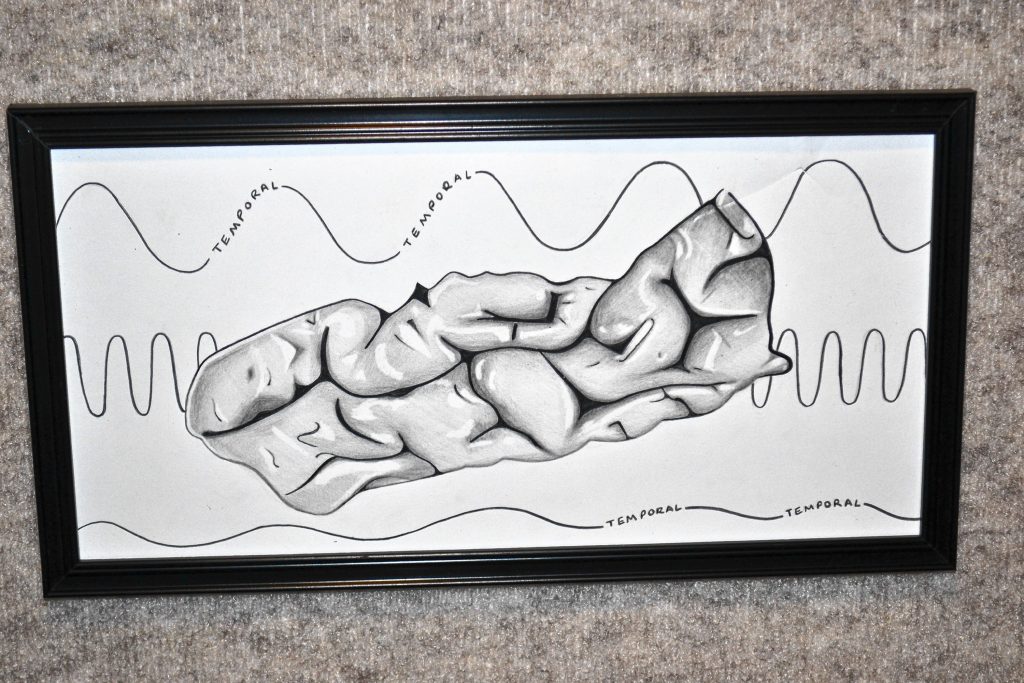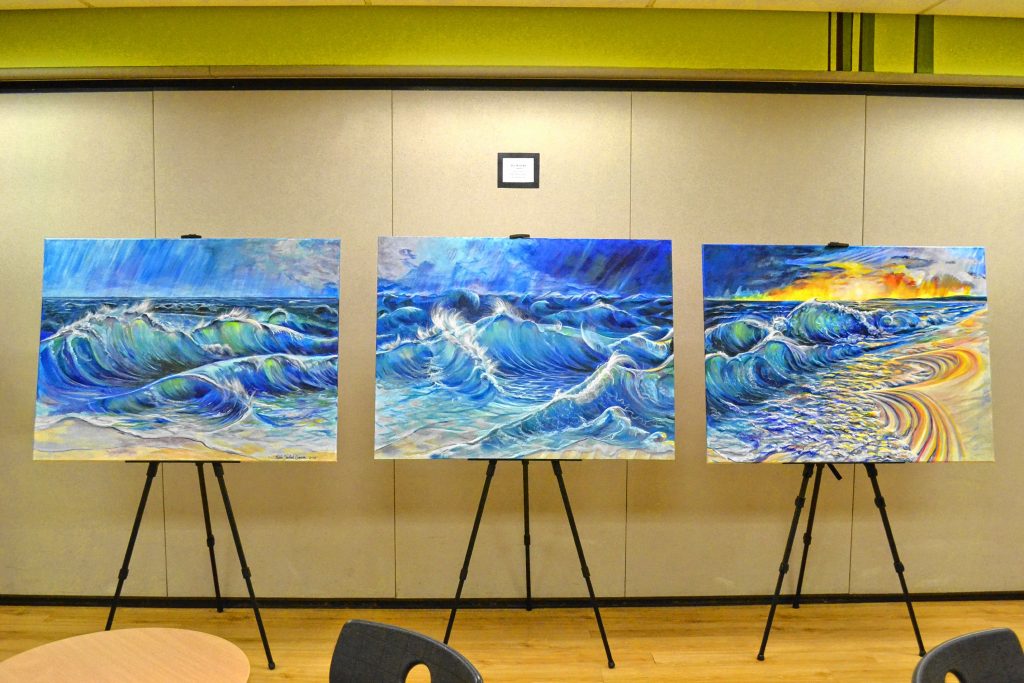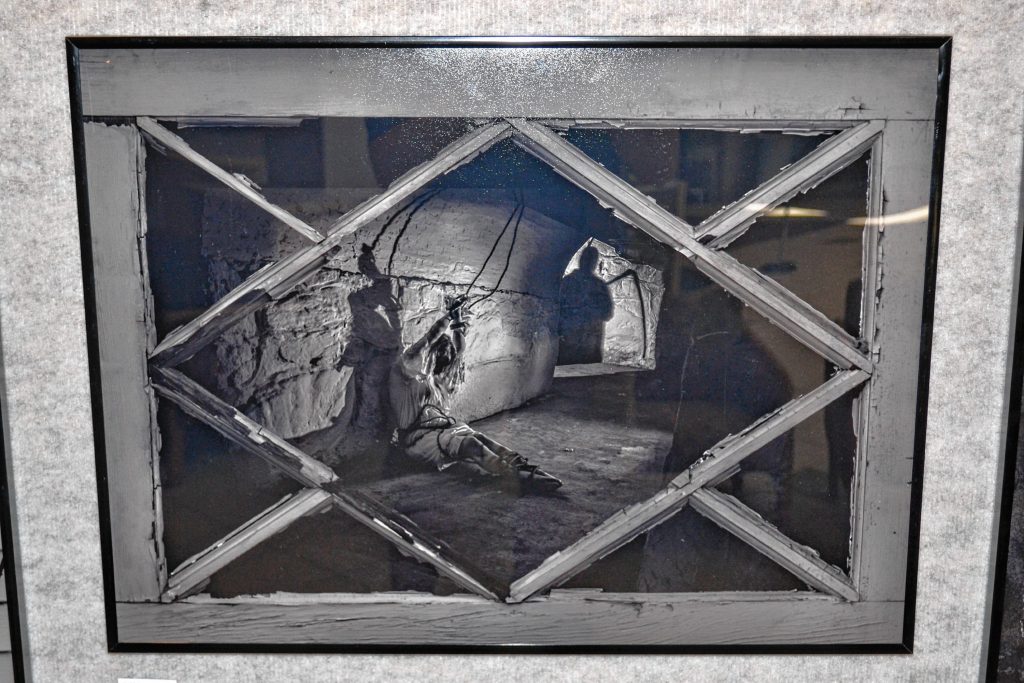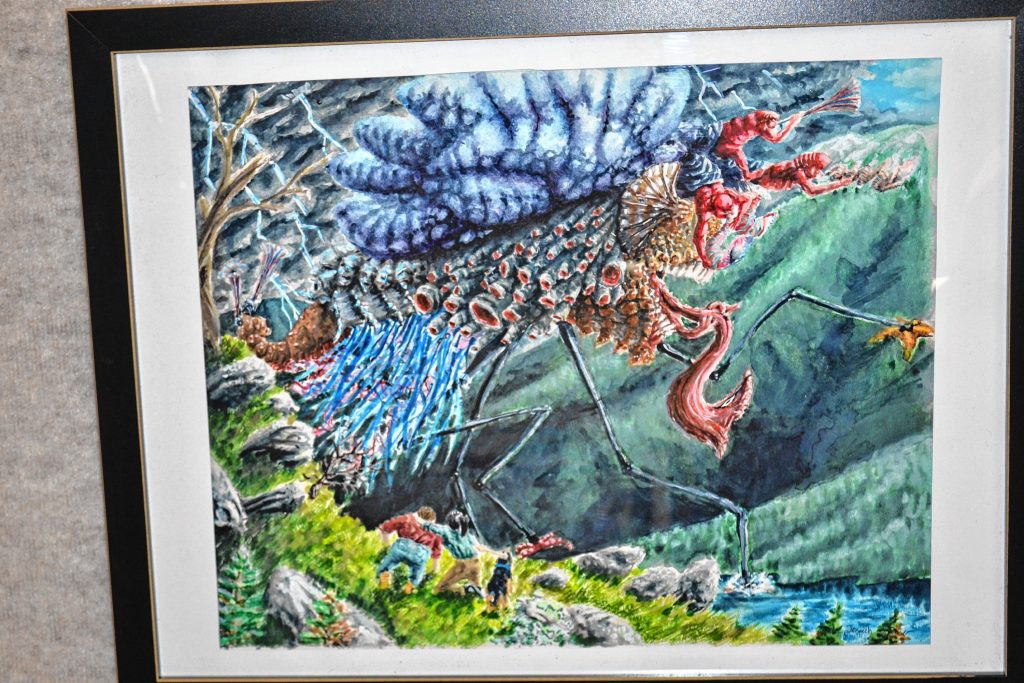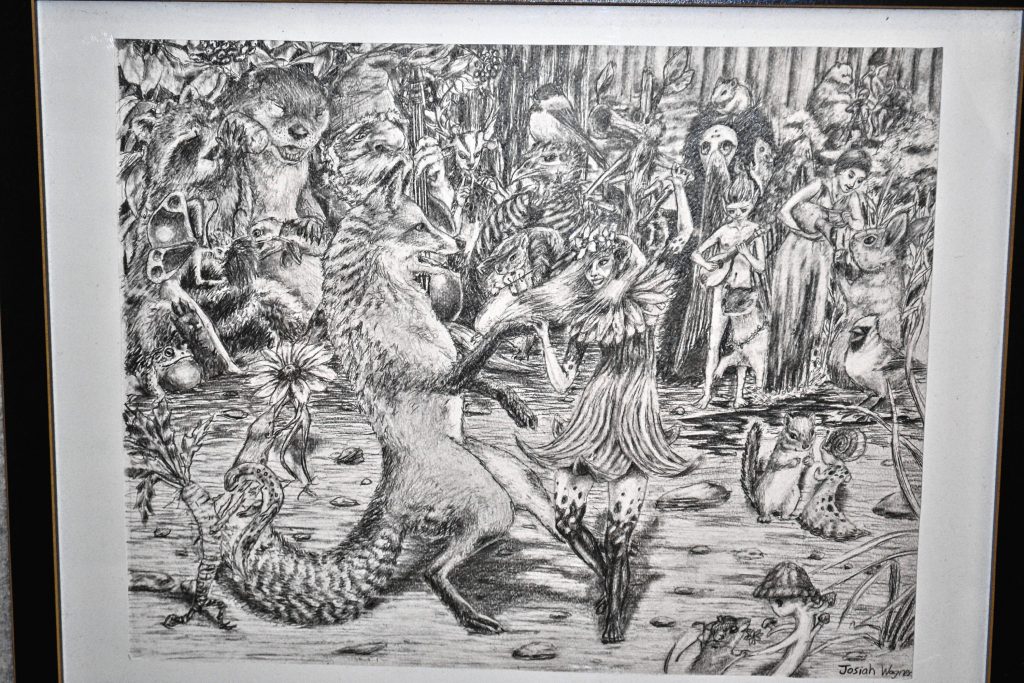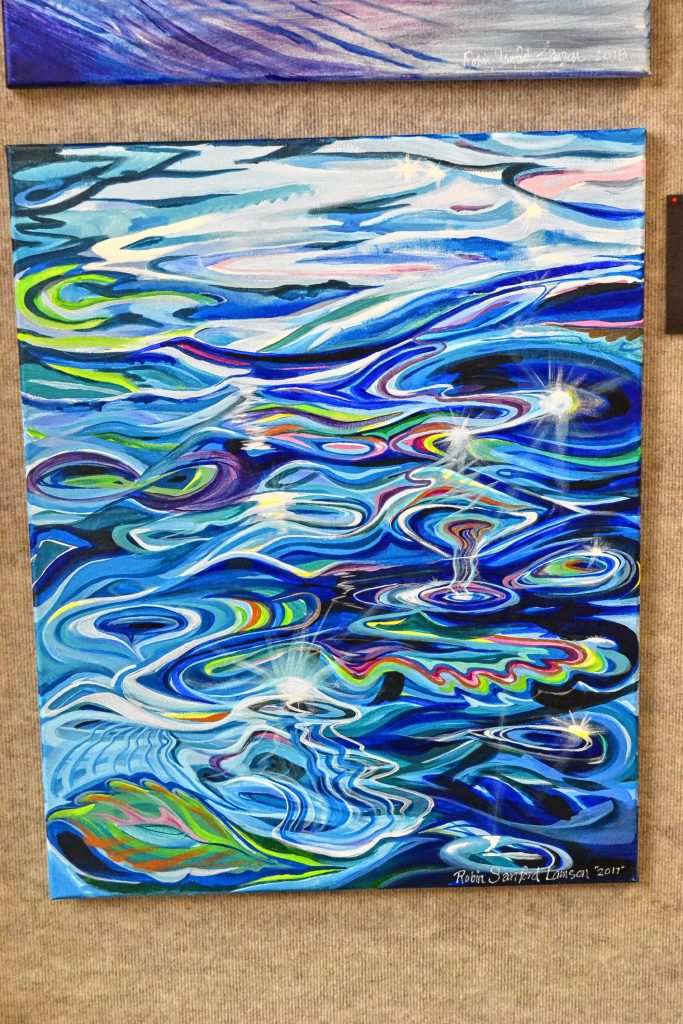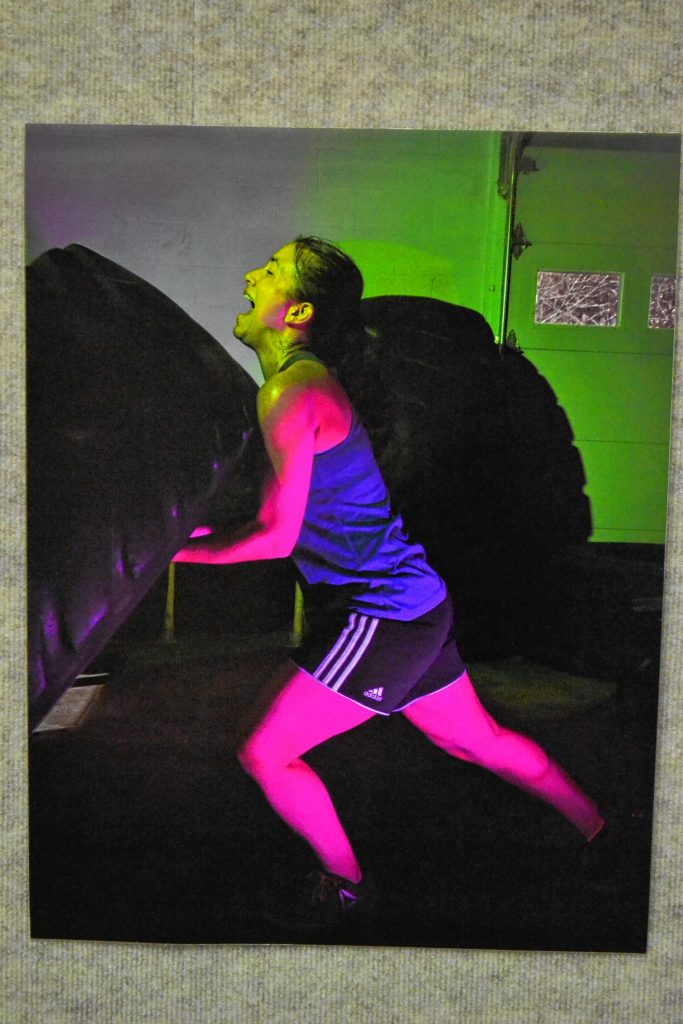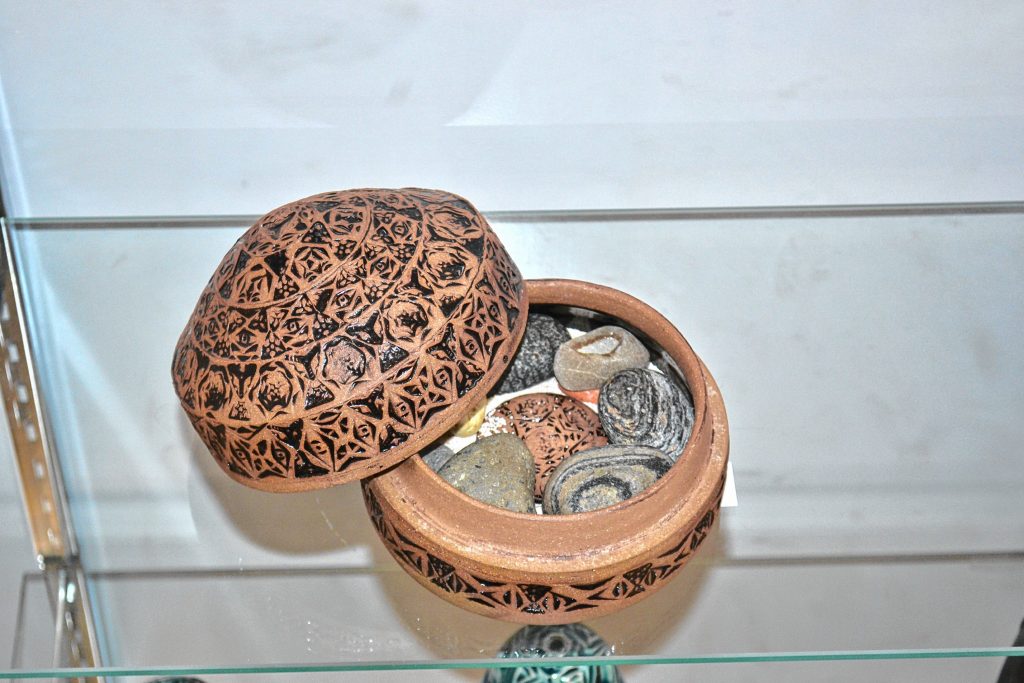Walk into the NHTI library and you’ll see quite the variety of artwork hanging around.
There are paintings and drawings and photographs, as well as a collection of stoneware creations. Within those mediums, the true abilities and strengths of the eight artists is clearly on display.
Underneath each collection of art is a statement – a requirement for each student completing the school’s visual arts capstone course. It’s the final piece of the graduation puzzle for students in their quest for their associate degree.
At the beginning of the course, which most take during their final semester at NHTI, the students craft a clear and precise artist statement that defines their intent for the capstone. From there, they create a body of work that must match that statement.
“It’s a very focused thing,” said Susan Haas, head of the visual arts department. “They are nailed down to that statement and cannot waiver.”
The students select a mentor from the NHTI visual arts faculty, one they have connected with during their time at the school that will help oversee their project from beginning to end.
“That person serves as a way to keep them from going off track,” Haas said.
The number of students who complete the capstone and subsequently display their work each spring before graduation changes from year to year.
Right now, there are eight students who completed the course, while there were 13 last year. There are also usually a few others who don’t finish. As you can see, it’s a pretty demanding course. This year’s capstone students include Brianna Heckadon, Misty Martell, Avery Bondra, Robin Sanford Lamson, Riley Charron, Josiah Wagner, Joel Bowman and Curtis Marden.
“It all depends on the graduating class,” Haas said. “But it’s an arduous process. We’re putting serious professional mandates on these students.”
From January to April, the students will create anywhere from eight to 10 pieces and then select the best ones for both the final project and the public exhibition. But it all starts with that artist statement and a clear plan of how the semester is going to play out.
“They really need to have their body of work in their heads before they start,” Haas said. “And they have to create it within the one semester.”
Each student has an artist sketchbook/notebook where they can jot down notes and ideas and put other potential work they want to do that just doesn’t fit within the directive of the project.
They meet either weekly or every other week with their mentor to make sure things are moving in the right direction. Haas had three students this past semester that she worked with.
“They quickly learned my teaching schedule and would just pop in when I wasn’t in class,” she said.
And, of course, this entire project is happening while they’re taking a full class load in order to have the credits needed to graduate.
But even though they rely on their mentors for advice and direction, this is truly a student-directed project.
“They’re in charge of driving their bus,” Haas said. “They’re in charge of every aspect of the project.”
Many will sell their work during the end-of-year exhibition, while creating business cards as they move away from being students and start to head down that road to becoming professional artists.
As far as Haas knows, NHTI is the only higher education institution in the state that requires a capstone for an associate degree.
And you can check out a selection of the capstone students’ work in the NHTI library. Most of it will be up through the end of May, but some may be taken by the artist after graduation this week. So in other words, get there soon to check it out.

